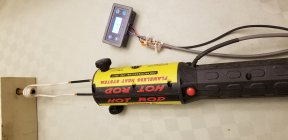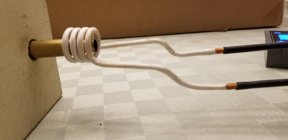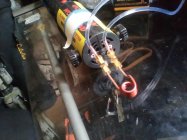[I looked through the threads and couldn't find this solution referenced yet.....]
I love the thought of induction annealing. (Simple. Consistent.) I don't like the price tags.
I love the various DIY induction projects that have been documented here, but they're more DIY than I have the desire or skill to take on.
I currently use a Benchsource. I love it relative to not annealing at all. The overhead of setting it up for a session, calibrating it, etc. is less than ideal.
I stumbled on this induction solution last night. WAY simple. Obviously not elegant. But it seems like you'd very much be able to get the case-to-case consistency, which is what I'm most interested in. If I were to go this route I'd probably try to work out some sort of manual method to bring the case to the unit rather than the other way around.
Has anyone seen this? Thoughts?
It was a good video, but he went very quickly past the wiring of the timer.
- where did he cut the extension cord and why did he have two black wires?
- he clearly attached the DC adapter to some sort of connector befor he attached it to the timer. Hiow?
Last edited:













